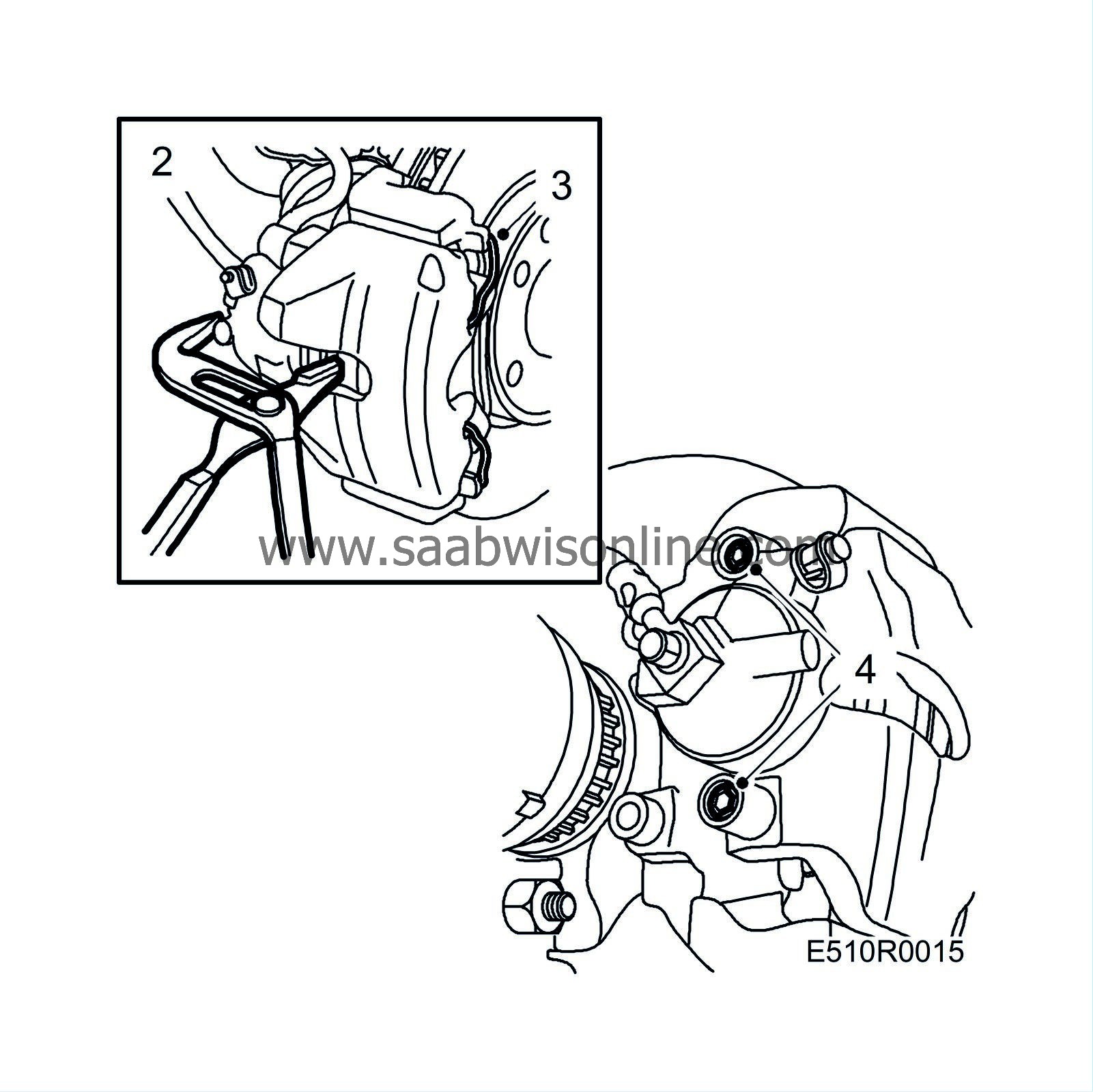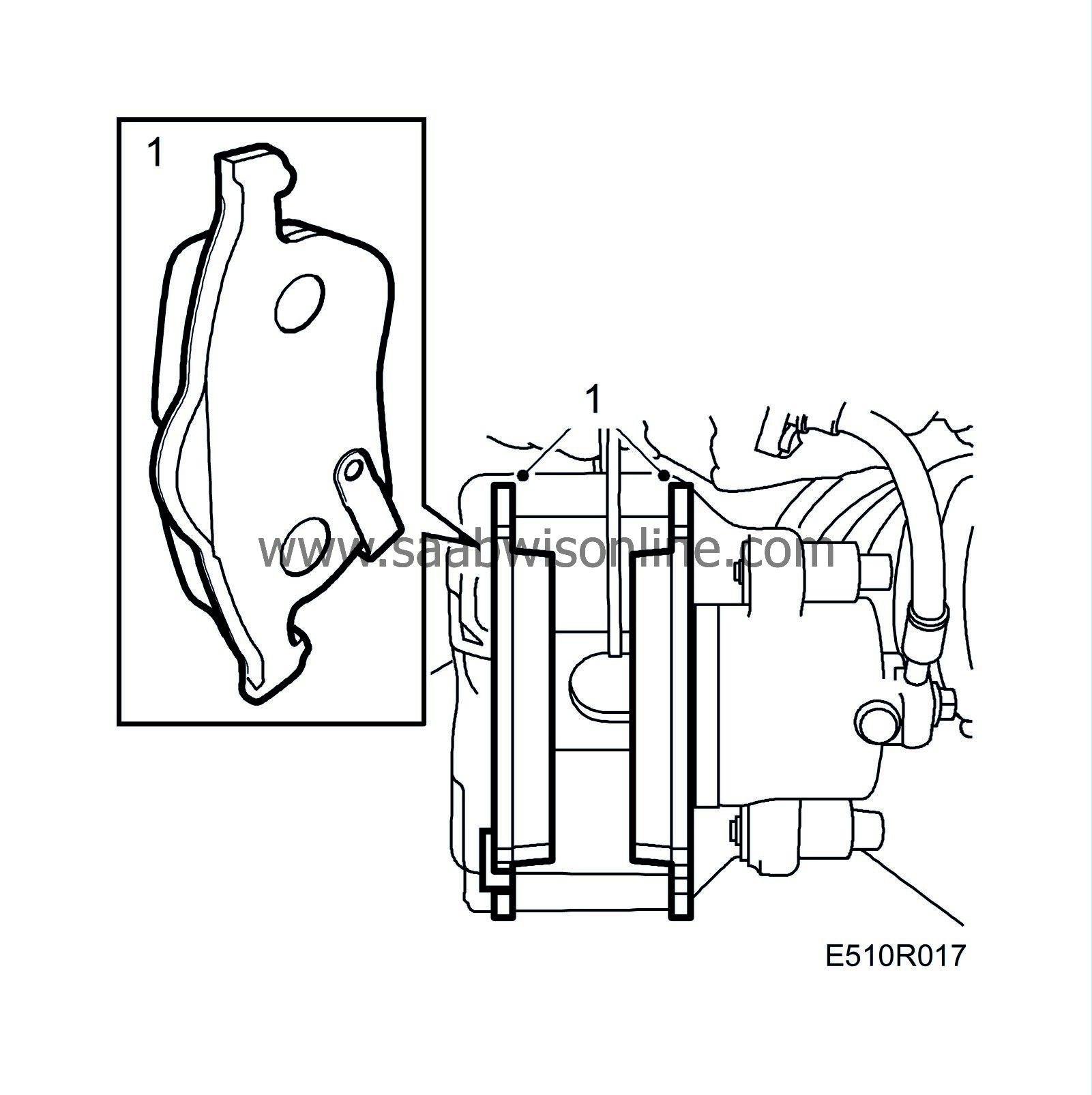Brake pads, front wheel
| Brake pads, front wheel |
The brake pads should be changed if the thickness of the friction material is less than 5 mm (0.2 in).
The brake pads are also fitted with an acoustic wear warning device which alerts the driver when pad thickness is below 3 mm (0.12 in). When this warning is heard the pads should be changed as soon as possible.
| To remove |

| 1. |
Raise the car and remove the wheels.
|
|
| 2. |
Press back the piston with a pair of slip-joint pliers.
|
|
| 3. |
Remove the clip from the brake caliper.
|
|
| 4. |
Remove the dust caps from the guide pins and then remove the guide pins.
|
|
| 5. |
Lift the brake caliper off the brake disc and suspend it from the suspension strut.

|
|
| 6. |
Remove the brake pads.
Clean the inside of the brake caliper with a soft wire brush and inspect the dust caps. |
|
| To fit |

| 1. |
Fit the new brake pads in the brake caliper.
|
|
| • |
The outboard brake pads have acoustic wear indicators that must face downwards.
|
| • |
The inboard brake pads must be fitted with the arrows pointing in the direction of rotation of the brake disc when the car is driven in a forward direction.
|
| 2. |
Fit the brake caliper, clean the guide pins and tighten them using a torque wrench.

Tightening torque 28 Nm (20 lbf ft). |
|
| 3. |
Fit the dust caps and clip, as shown.
|
|
| 4. |
Fit the wheels, see
Wheels
.
Tightening torques aluminium wheel 110 Nm (81 lbf ft) steel wheel 50 Nm +2x90°, max. 110 Nm (37 lbf ft +2x90°, max. 81 lbf ft)
|
||||||||||
| 5. |
Lower the car to the floor and depress the brake pedal to force out the brake pistons.
|
|
| 6. |
Check the level of the brake fluid.
|
|



